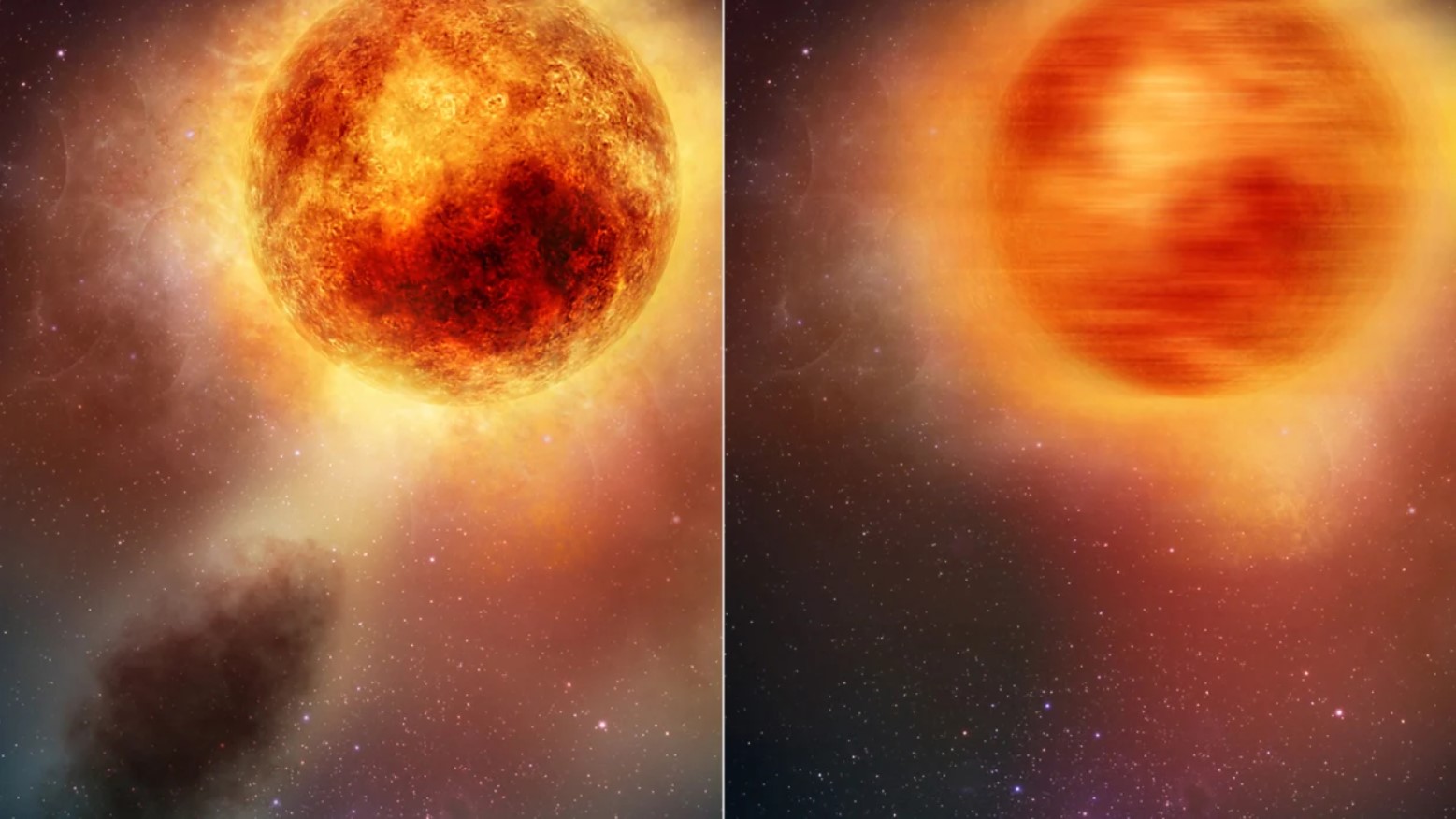Just like the mischievous Tim Burton character of the same name, the red supergiant star Betelgeuse's head shrank.
Scientists watched the star blast its outer surface into space in 2019, an unexpected cosmic event they had never seen before in a normal star. The eruption was so catastrophic, it blew off 400 billion times as much material as the sun does routinely in ejections linked to solar flares, according to the Space Telescope Science Institute in Baltimore.
What's more, the star got so dim, even backyard stargazers noticed. That left many people wondering if Betelgeuse [indeed pronounced "Beetlejuice"] was on the brink of an explosive stellar death.
It's not about to go supernova, experts say. But new observations from the Hubble Space Telescope are helping astronomers understand how red stars like Betelgeuse lose mass as they age — and what consequences follow such a significant eruption. Because the scale of the blowout was vastly greater than the plasma that occasionally spews from the sun's corona, scientists suspect what happened to Betelgeuse might be a different sort of phenomenon.













No comments:
Post a Comment